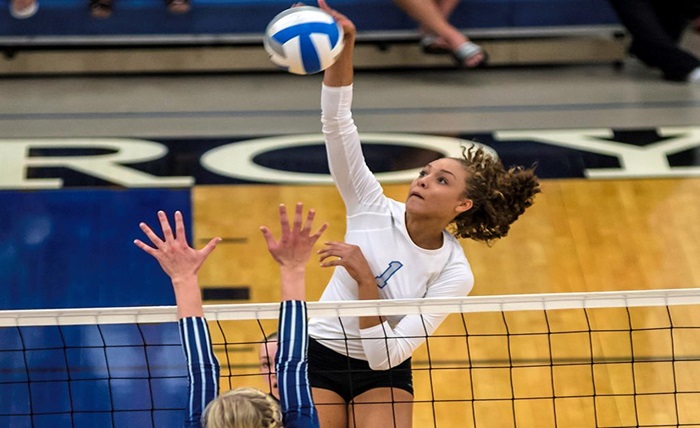Volleyball requires agility, quick reflexes, precision, and coordination, but the skills players develop on the court can easily transfer to other professional sports. The versatility of volleyball’s core techniques gives athletes an edge in multiple disciplines.
Here are five pro sports where volleyball skills make a significant impact.
Football
The crossover between volleyball and football is more apparent than one might think, especially when considering the agility and jumping skills developed in volleyball.
In football, wide receivers and defensive backs, in particular, benefit from the vertical leap that volleyball players are accustomed to. Catching a pass or contesting a throw requires the same type of explosive jumping power used to block a spike in volleyball. The ability to time leaps and position the body for optimal control in the air is essential in both sports.
The agility and jumping techniques honed in volleyball translate seamlessly to football, particularly for positions like wide receivers and defensive backs. For example, T.J. Watt, known for his versatility, also played hockey before focusing on football. The T.J. Watt player odds in NFL games reflect his strong inclination and skill for dominating American football.
Likewise, DeAndre Hopkins, a former college basketball player, and Marquise Goodwin, who competes in track and field, bring unique athletic skills from other sports into their football careers.
Football also demands excellent hand-eye coordination, which volleyball players already have from their experience setting and spiking. Controlling the ball midair, whether catching a football or tipping it to avoid a defender, uses similar timing and precision.
This natural crossover makes volleyball players well-equipped to handle football’s fast-paced, physically demanding nature.
Basketball
One of the most direct transfers of volleyball skills is seen in basketball, particularly in jumping and hand-eye coordination. Volleyball players are known for their explosive vertical leaps, essential for spiking and blocking. In basketball, this translates into exceptional rebounding ability and shot-blocking skills, which depend on a strong vertical jump. Players who excel at these abilities often thrive under the basket, snatching rebounds or deflecting shots.
Moreover, volleyball teaches athletes to make quick, precise hand movements, which are also critical in basketball for passing and shooting. The fast-paced action in both sports means quick decision-making and teamwork are essential, whether setting up a spike or threading a perfect pass to a teammate. This overlap of skills allows volleyball players to easily transition to basketball, bringing a sense of spatial awareness and a sharp instinct for ball control.
Tennis
Another sport that benefits from volleyball training is tennis. Both volleyball and tennis demand quick reflexes and sharp hand-eye coordination. In volleyball, players must react rapidly to unpredictable ball movements, particularly when defending against spikes or tipping balls over the net. Similarly, tennis requires athletes to anticipate and respond quickly to fast serves and volleys, honing the same reflexive skills.
Volleyball’s emphasis on lateral movement and positioning plays a crucial role in tennis as well. Strong footwork allows tennis players to cover the court efficiently, while controlled movements help them accurately return shots.
For volleyball athletes transitioning to tennis, their quick lateral movements, built up from years of sliding and diving for the ball, give them an edge when maneuvering on the tennis court.
Soccer
At first glance, soccer may seem vastly different from volleyball, but the two sports share fundamental body control and agility skills. Volleyball players are trained to move swiftly across the court, often jumping or diving to keep the ball in play. This agility translates well into soccer, where quick movements, balance, and coordination are required to evade defenders and navigate the field.
Moreover, soccer relies on footwork and controlled body movements, which volleyball players develop during blocking and attacking. A spike in volleyball requires perfect timing, foot placement, and elevation, just as a soccer shot needs precise foot control and balance. Players who bring the sharp foot coordination from volleyball into soccer often excel at close ball control, sidestepping defenders, and managing tight spaces.
Track and Field (High Jump and Long Jump)
Volleyball’s emphasis on jumping is highly beneficial in track and field events such as high and long jumps. Players are accustomed to explosive vertical leaps, critical in these track events. The biomechanics of a powerful volleyball spike translate well into the take-off required in both jumping events, where maximum height or distance is the goal.
Beyond jumping ability, volleyball players possess excellent core strength and overall body control, both essential in track and field. The same muscle groups used to leap at the net provide the foundation for strong and controlled jumps on the track.
With years of conditioning in leg power, volleyball athletes can easily transfer their skills to succeed in these highly specialized track events.
Final Thoughts
With its wide range of transferable skills, volleyball is more than just a standalone sport—it’s a foundation for success in many other professional athletic arenas. Whether transitioning into basketball, soccer, or track and field, volleyball players have the tools to excel, bringing a deep understanding of physical coordination and strategic play.







